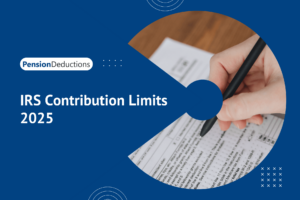
IRS Contribution Limits 2025: What You Need to Know
Explore the IRS Contribution Limits 2025 and learn how inflation adjustments can maximize retirement savings for individuals and employers alike.

Explore the IRS Contribution Limits 2025 and learn how inflation adjustments can maximize retirement savings for individuals and employers alike.

Discover the new 401k limits in 2025, maximize your retirement savings, and secure a financially stable future.

Automatic portability of 401k plans in 2025 ensures seamless retirement savings transfers, preserving funds and enhancing financial security across careers.

Uncover how Social Security Reforms 2024 will impact retirees with crucial changes to taxes, benefits, and retirement age adjustments.

Discover why Fidelity Investment remains a top choice in 2024, offering low costs, advanced tools, and innovative solutions for every investor.

Learn how the Social Security Administration impacts retirement in 2024, including benefit calculations, eligibility, and strategies for maximizing your Social Security income.

Planning for retirement in USA involves Social Security, inflation strategies, and choosing the best states, ensuring a secure financial future.

Discover the top retirement savings tips for individuals aged 55 to 64. Learn how to maximize your 401(k), IRAs, Social Security, and pension benefits while planning for a secure future.

Explore the Retirement Security Rule and its impact on your retirement planning, savings strategies, and securing a financially stable future.

Learn effective strategies to maximize your 401k for a secure retirement. Discover tips on matching, investment choices, and catch-up contributions!
Hi ,
The information you have provided is as follows:
Three year average income:
Participant’s age:
A participant with the above mentioned parameters can accumulate
(Lump Sum at Retirement Amount) till he reaches an assumed retirement age of (Retirement Age) . In the first year, a maximum contribution of (Maximum Contribution) can be made to the plan.
A plan can be incorporated at any time during the year, and within a certain time in the following year. The funding of the defined benefit plan can also happen any time before the company files its tax returns.
If you have employees, the IRS mandates you to make available a retirement plan for employees as well. Depending on the plan design, you will be required to contribute an amount of 3% to 7.5% of the employee wages in a profit sharing plan. We will consult with you to come up with the best plan design based on your circumstances and company demographics. Our Census Request Form will be emailed to you which has to be filled and sent back to info@pensiondeductions.com .
Please enter your email address below. A comprehensive report shall be emailed to you outlining the further steps you need to take in order to get started with a defined benefit plan.
Please note that these contribution amounts are approximate amounts and only for the first year of the plan. These amounts still need to be certified by an actuary and contributions should not be made based only on the amounts generated by the online calculator without consulting an actuary.
Request a call back from a Pension Consultant
Please enter your email address below. If you do not receive our email in a few minutes, please check your spam folder.
